Fighting violence against women and girls: 3 Safe Spaces heatmaps
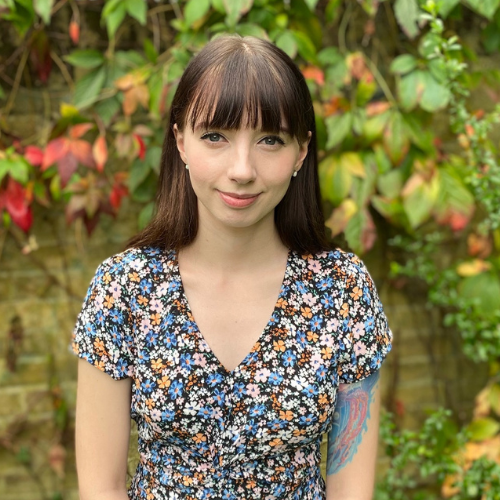
By Charlotte Cooper | 07/12/21 09:21
3 min read
Violence against women and girls (VAWG) needs to end now. We see placemaking technology like Commonplace as key in this fight, so have gathered three examples of how our Safe Space heatmaps have been making a difference in those areas.
For more information on how technology can help in a VAWG strategy, download our free eBook below.
No woman should feel unsafe walking in any neighbourhood let alone her own.
With this as our mantra, we partnered with UN Women UK to build our Safe Spaces heatmap. Designed so people can point out the specific places that make them feel unsafe, local authorities can then take direct action from these comments and focus their efforts on fixing them.
With UN Women running their 16 Days Of Activism against gender based violence campaign, we’ve brought together a few Safe Space websites to show how they’re making a difference and to inspire your own VAWG strategies.
Commonplace’s Safe Spaces platform
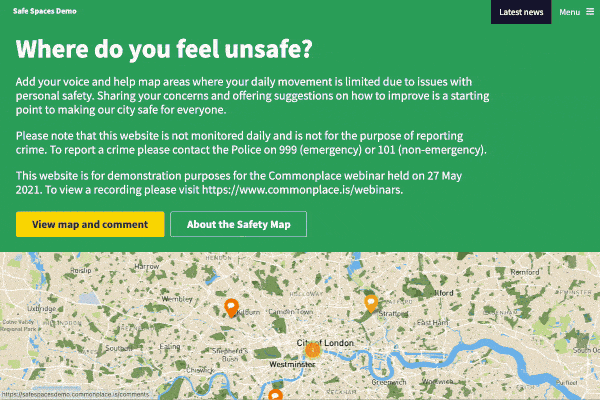
Our Safer Spaces platform is built in partnership with UN Women UK and is free to local and police authorities to use for 3 months. We wanted to use digital inclusion to understand the key problems for women and girls and to fight VAWG using real insights from the people it affects. UN Women UK conducted a survey with over 1,000 respondents and revealed that almost 9 in 10 women in some cities around the world feel unsafe. The engagement within the survey highlighted the lack of systems in place to reduce harassment as well as the fact that many felt their voices on the issue just aren’t heard.
This is where our platform comes in.
Our heatmap allows for people to drop a pin on a specific place, explain why they feel unsafe and suggest improvements: for example, better lighting in dark areas at night. These comments are also 100% visible to anyone who visits the website so the whole community can see and better understand the things that can make women and girls feel unsafe. This not only gives those affected the microphone in this conversation, but provides a tool for others to listen, learn and consider how they can better help in the fights against VAWG.
The questions in our survey were also specifically designed to not limit the answers that could be given. While the focus is on women and girls, the questions have options that cover other reasons why people may feel unsafe in certain areas i.e sexual orientation, visible religious affiliation or gender presentation.
Safe Spaces Islington
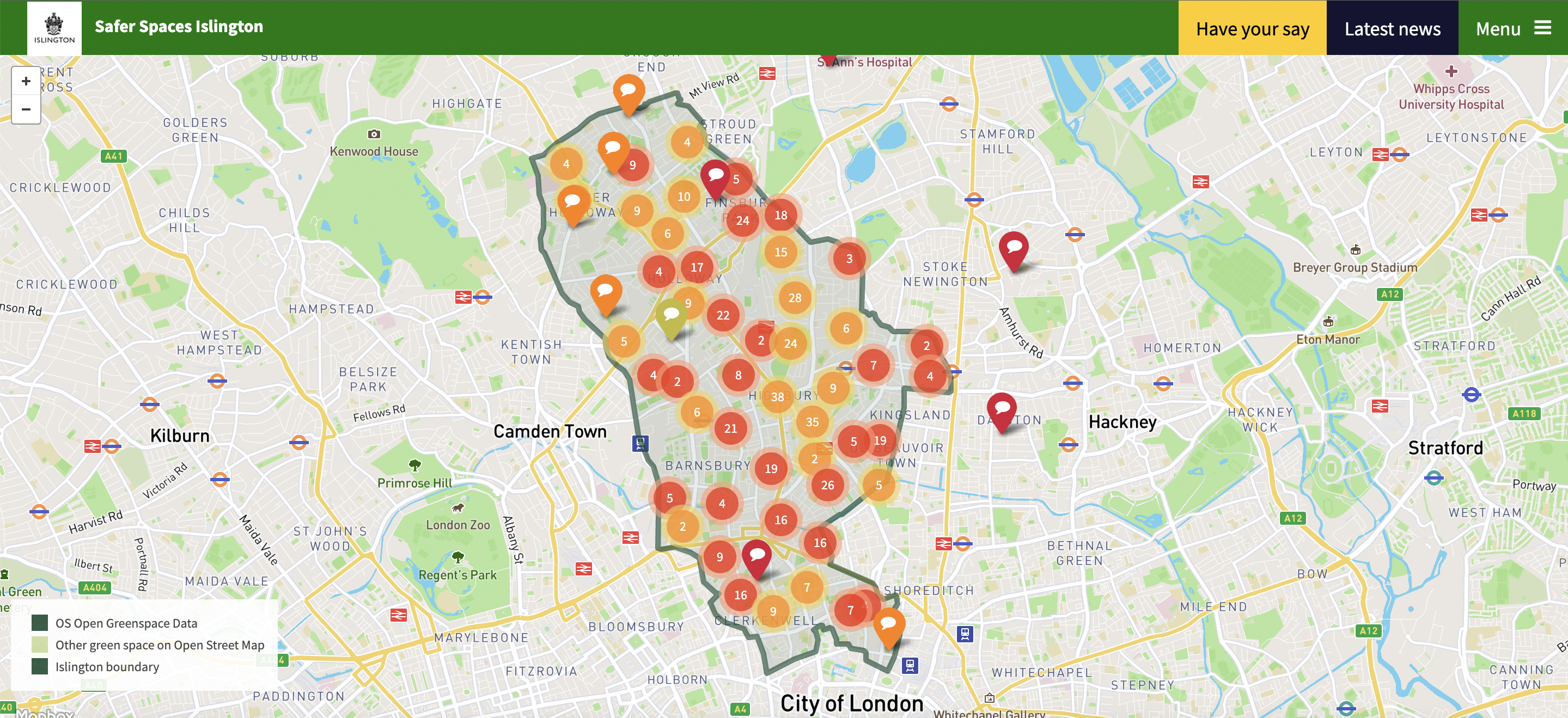
To reduce incidents of VAWG in public spaces, Islington Council have partnered up with Commonplace to produce their own Safe Spaces heatmap. The aim of this is to improve feelings of safety at night as well as build an evidence base for what works in improving women’s safety in public spaces.
The results? Since July, the project has had:
- 1900 site visitors
- 961 contributions
- 224 news subscriptions
Islington Council has also sent over 100,000 physical postcards for local residents to fill out so those unaware of the website or who don’t have access can also engage with the initiative. Thanks to the overwhelming response, they’ve been able to highlight several key areas of concern in the community and are ready to tackle them to create a safer Islington for everyone.
Check out their platform here
If you’d like to understand more about how we see digital technology as a key part of VAWG strategies, please download our free eBook here. It contains all the data we collected with UN Women UK as well as tips on how to set up your own Safe Spaces heatmap.
Safe Spaces around Olympic Park
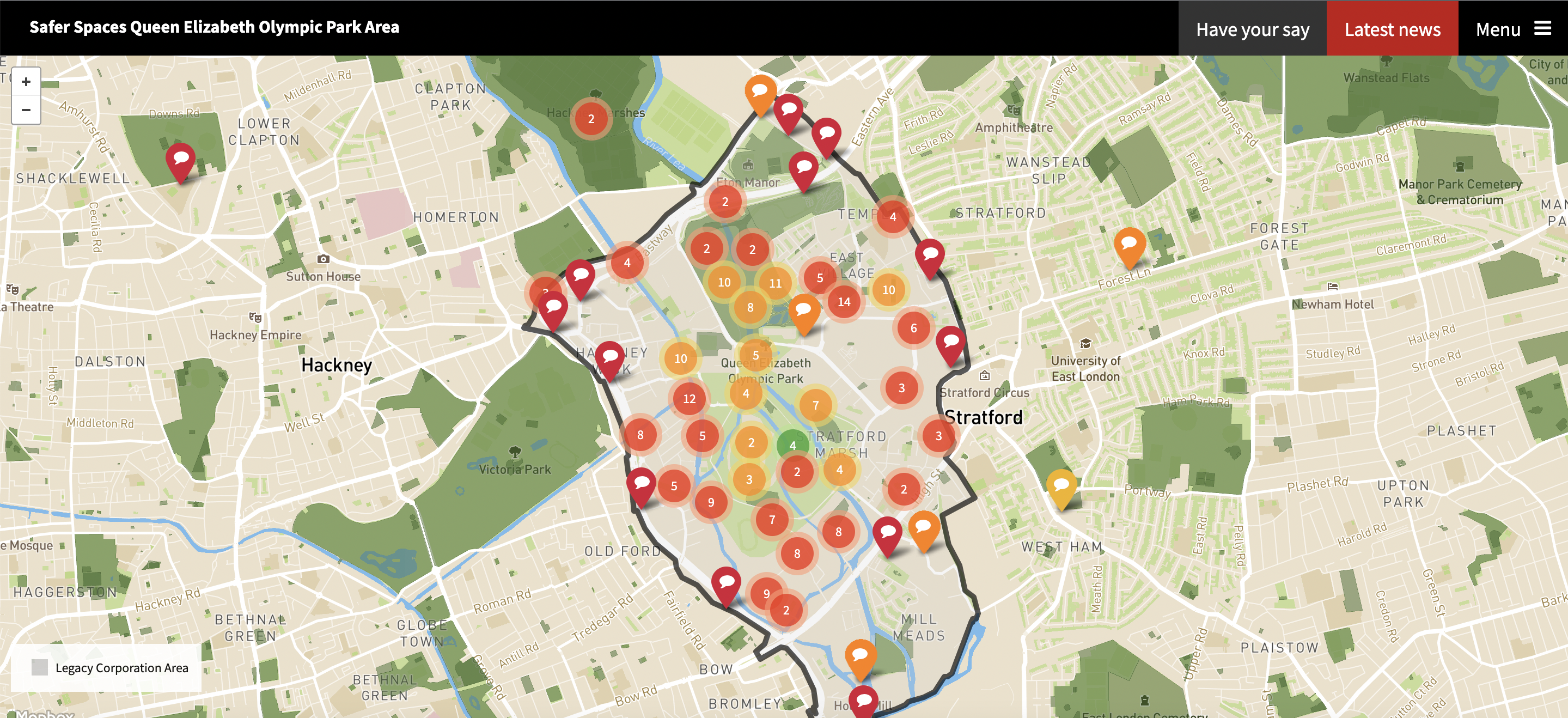
Initiated by the London Legacy Development Corporation (LLDC), this Safe Spaces platform was set up to help prevent VAWG in Queen Elizabeth park.
While the park was the first in the UK to achieve SBD (Secured By Design) and 91% of visitors had previously reported that they felt safe when there, they wanted to do more to ensure that every single person felt as comfortable as possible when visiting, no matter the time of day.
This feedback will allow us to prioritise any reactive improvements that can be made to the current estate while also ensuring that the future planning, design, and development of new LLDC neighbourhoods explicitly considers women and girls’ safety. -LLDC
Their results?
Since its launch in September, the website has received:
- Almost 3,700 visitors
- 478 contributions
- 98 news subscribers
This consultation will be running until 6th December and you can see their full project and pledge here.
Women’s safety in public spaces Hackney
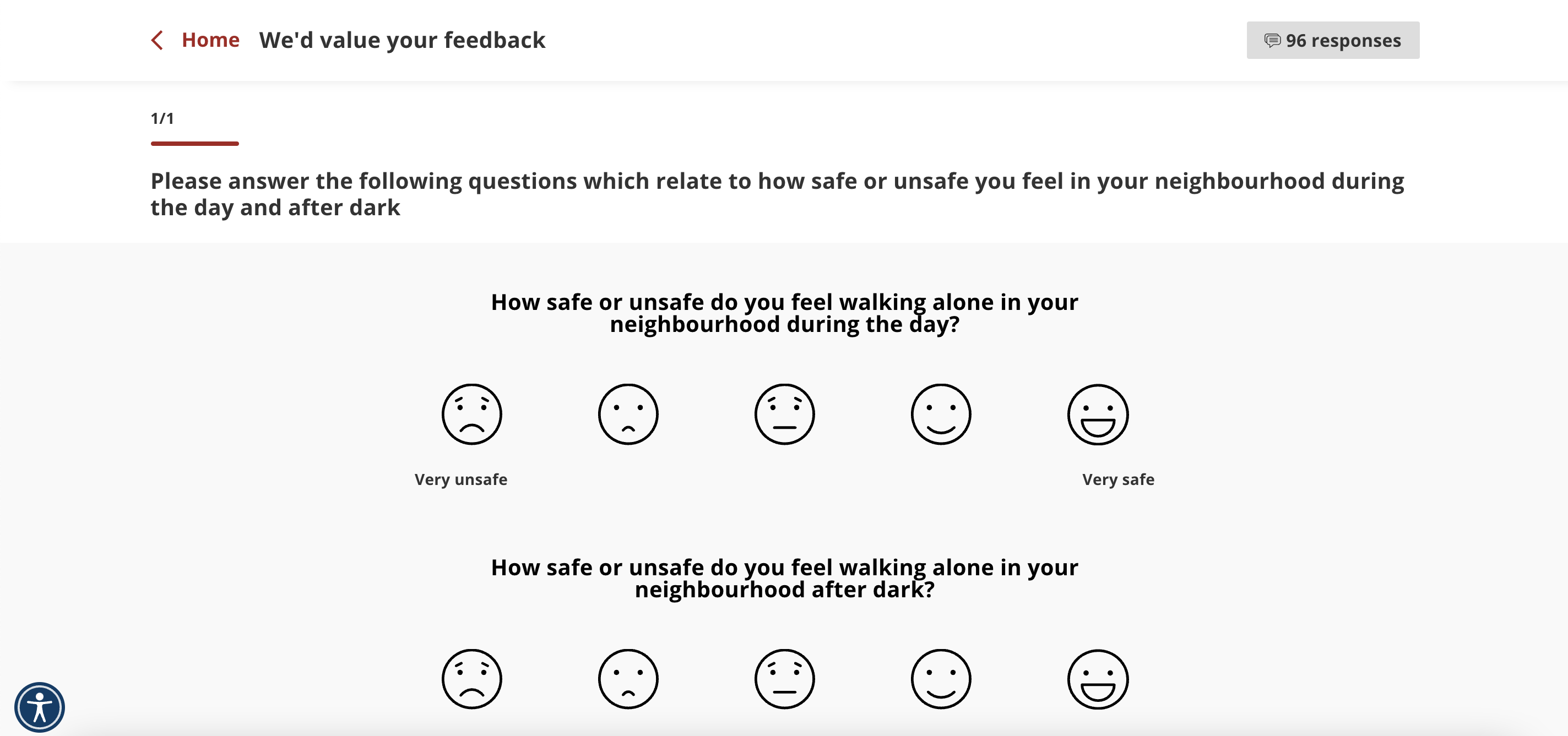
Hackney Council is using Commonplace it a slightly different way.
Their Safe Space platform also includes a survey as well as the heatmap. The use of emojis and short questions allow for the council to get a simple but thorough sample of how people feel about safety in Hackney. The Commonplace dashboard easily lets them see how many of the reponses are positive, neutral or negative and what the general spread of answers are.
This survey is part of the work the Council is doing on 16 days of activism to end gender-based violence locally - as part of the UN’s worldwide campaign. - Hackney Council
Their website has only been live for a few days but has already received:
- 535 visitors
- 178 contributions
- 109 news subscribers
Their survey is open until 22nd January 2022 and you can view the thought process behind their initiative right here.
Every part of the country is different, but all women have a story about feeling unsafe- even within their own neighbourhoods. If you’d like to make a difference and take a stand in fighting VAWG, we want to help. Our Safe Spaces heatmaps are free for 3 months to local and police authorities- just get in touch below and we’ll help you take that next step towards creating safer streets for women and girls.
.png)

